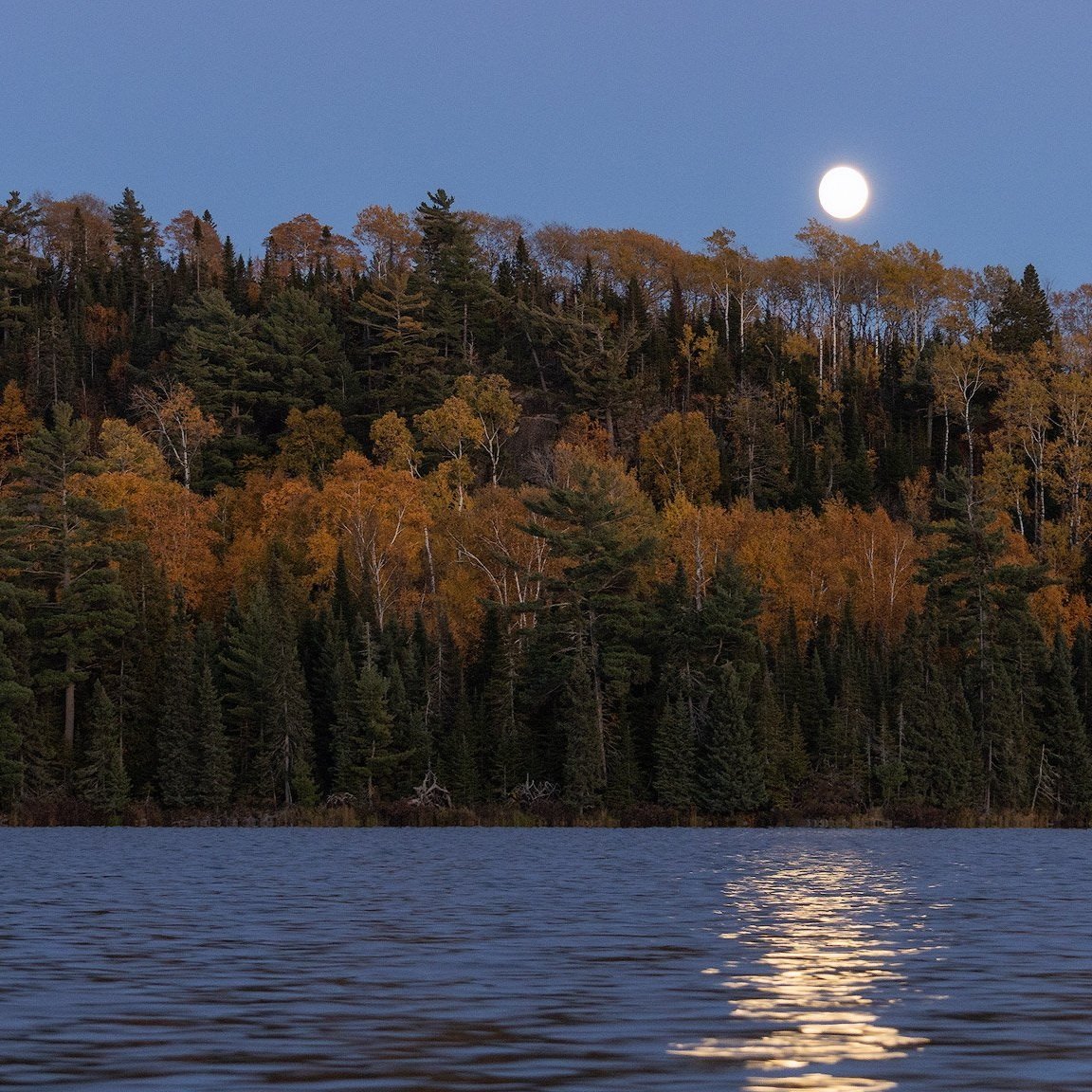
Resources
Volunteer
Non-Wilderness vs. Wilderness Clearing Trips
Every year in the spring and fall, we welcome the trail community to help us keep the trail maintained. Over half of our trail is located inside the Boundary Waters Canoe Area Wilderness (BWCAW), so we designate our clearing trips as non-wilderness or wilderness.
While the word wilderness may have very different meanings to each of us, federally-designated Wilderness has an official definition and the agencies have legal stewardship responsibilities which impact how trails are planned, constructed, managed, maintained, and used in these areas.
While operating inside the BWCAW, mechanical tools are prohibited. Instead, we use tools like cross-cut saws, hand saws, loppers, and manual weed cutters. On non-wilderness trips outside of the BWCAW, we utilize chainsaws and brush cutters. Special training is required to operate both crosscut and chainsaws while volunteering on the Border Route Trail.
If you don’t like the idea of operating equipment, there is always a need for volunteers to throw the cut brush and deadfalls off the trail.
Boundary Waters Canoe Area Wilderness
The BWCA Wilderness is a unique area located in the northern third of the Superior National Forest in northeastern Minnesota. Over 1,098,000 acres in size, it extends nearly 150 miles along the International Boundary adjacent to Canada’s Quetico and La Verendrye Provincial Parks, bordered on the west by Voyageurs National Park with Grand Portage Monument to the east. The BWCAW contains over 1,200 miles of canoe routes, 12 hiking trails and over 2,000 designated campsites.
This area was set aside in 1926 to preserve its primitive character and made a part of the National Wilderness Preservation System in 1964 with subsequent legislation in 1978. Wilderness offers freedom to those who wish to pursue an experience of expansive solitude, challenge and personal connection with nature. The BWCAW allows visitors to canoe, portage and camp in the spirit of those travelers that came before them centuries ago. For the most current, comprehensive information on planning a trip to the BWCAW, please review the BWCAW Trip Planning Guide (PDF).
Leave No Trace & Backcountry Etiquette
The BRTA encourages everyone to apply Leave No Trace principles when visiting the BWCA. The Leave No Trace Center for Environmental Ethics, which encourages people to minimize their impacts and prevent avoidable impacts while enjoying the outdoors, offers the following seven principles of Leave No Trace camping when visiting the wilderness:
Plan Ahead and Prepare - Take the time to plan and prepare your trip in to Boundary Waters. This will make it more likely that you reach your goals, stay safe, minimize impact and perhaps most importantly, have a good time.
Travel and Camp on Durable Surfaces - Stay on portage trails and only camp in designated spots. This will make it less likely that anyone will notice you were there.
Dispose of Waste Properly - Don’t burn your garbage – pack it out! Pack out everything you bring into the wilderness. In addition, it’s vital that you know how to properly wash yourself, your dishes and do what you can to keep the water pristine. Clean water is at the heart of any experience of the Boundary Waters. Let’s keep it that way.
Leave What You Find - Bear skulls, moose antlers and thousands of other knickknacks make the Boundary Waters a magical wilderness. Avoid the temptation of bringing these things home with you. Let others enjoy the charm they bring.
Minimize Campfire Impacts - Campfires are an essential part of the wilderness experience. Keep fires small and in control.
Respect Wildlife - Remember, we’re visitors to the wilderness. Respect the animal inhabitants. This means properly storing food so that curious bears and hungry chipmunks don’t get into food that isn’t good for them.
Be Considerate of Other Visitors - At any given time, there can be multiple parties camped on a lake. Sound travels surprisingly well over water. Each visitor has plays a big part in keeping the wilderness a peaceful refuge of solace and adventure.
Wilderness Volunteer Stipends
When grant funding is available, Friends of the Boundary Waters has offered our wilderness volunteers a stipend to offset costs associated with working in the Boundary Waters Canoe Area Wilderness (BWCAW). In order to request this volunteer stipend, you’ll need to work with your trip leader and/or our Trail Clearing Director to complete this form. The stipend only covers work days, not travel days.

